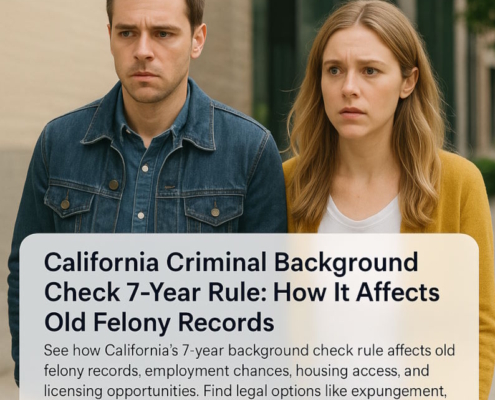Two weeks notice letter
A two weeks notice letter is an employee’s resignation letter informing the employer of their intent to resign two weeks from the date of the letter. A two-week notice letter tells an employer that you will leave their company in 14 days.

Author: Brad Nakase, Attorney
Email | Call (800) 484-4610
A two weeks notice resignation letter is the most common letter used when notifying an employer of an employee’s resignation. It is customary for employees to provide their employers with two weeks’ notice of their resignation. These two weeks give the employer time to put a plan in place for your absence. Employers have time to reassign your duties to other employees or fill your position. Employers will appreciate this and employees can leave on a positive note and gain a positive reference.
In this article, our employment attorney discusses:
How to write a two weeks notice letter.
- Keep a two weeks notice letter short. Employees should refrain from including too much detail as it is not in their best interests. The notice letter should state that the employee is leaving and their final day of work.
- Say thank you. An employee can include one sentence thanking their employer for the experience and opportunities during their time at the company.
- Keep it positive. It is best if employees do not mention any negativity. Instead, they should keep it positive and professional.
- Offer to help. Employees should sign off offering general help with the transition process.
- Send the two weeks notice letter to the correct people. A notice letter should be sent to HR, as well as the employee’s supervisor.
- Use a business letter format. The letter should look professional and include the employee’s contact information, the employer’s contact information and date of the letter.
- State the last day. The most important part of a notice letter is the final date of work. This avoids any unnecessary confusion or misunderstandings.
- Write a resignation email if more convenient. Rather than a formal resignation letter, an employee can write a resignation email. In the subject line, the employee should put their full name and resignation. The content of the email will be the same as a resignation letter.
How to quit a job over text examples.
You can resign by text message when you’re leaving a small company or a temp agency. However, you can give your two weeks notice by text message, but it is not recommended. Quitting our job by text message may be considered to be impolite. When leaving a full-time job, you’re encouraged to send an email or a paper letter. To put in your two weeks’ notice by text message, simply send a short and polite message to your boss.

Sample two weeks notice letter
(Date of letter)
(Supervisor’s name)
(Company name)
(Company address)
RE: John Doe Resignation Letter
Dear (Supervisor’s name),
I am providing my two weeks notice of my intent to resign from the company. My final day working for (company name) will be (final date).
I appreciate the opportunities and experience I have received at (company name), and thank you for your commitment to me. However, I have been offered an opportunity that aligns with my career goals and will be leaving to pursue that avenue.
I shall continue to perform my responsibilities until my final day of employment. If there is anything I can do to make the transition easier on your end, please let me know.
Sincerely,
(Employee’s name)
Have a quick question? We answered nearly 2000 FAQs.
See all blogs: Business | Corporate | Employment
Most recent blogs:

Is Weight Discrimination Illegal in California? A Clear Look at Protections, Risks, and Employer Duties

Can I Refuse to Sign a Written Warning at Work?

Is Nepotism Illegal in California? What the Law Allows and Prohibits

Salary Requirements California: Minimum Pay, Exempt Status, and Overtime Rules

Borello Test Explained: Worker Classification Rules in California

California Criminal Background Check 7-Year Rule: How It Affects Old Felony Records

How to Get Your Guard Card in California: Training, Steps, and Requirements

Vacation Pay for Salaried Employees in California: Rights, Accrual Rules, and Payout Requirements

California Salary Threshold 2026: Minimum Wage Increase, Exempt Employee Rules, and Compliance Checklist

How Long Do Employers Have to Keep W-2s: Record Retention Rules for Businesses

PAGA Notice Statute of Limitations: California Deadlines for Filing Claims

California Class Action Lawsuit Basics for Workers and Consumers

Meal Break Waiver in California: What Employees Can Agree To

Predictive Scheduling Laws: State and City Requirements for Employers

Harassment Training Requirements California: Employer Deadlines, Who Must Train, and Refresher Rules

Inside Sales Exemption California: Rules on Pay, Breaks, and Commissions

How Many Hours Can a Volunteer Work per Day in California? Laws, Limits, and Rights Explained

Show Up Pay California: Employee Rights for Being Sent Home Early or Given Short Shifts

Can Managers Take Tips in California? Laws, Tip Pools & SB 648

Can Owners Take Tips in California? A Complete Guide to State Tip Laws and Employee Rights

Right to Disconnect Laws in California: AB 2751 for Employers and Employees

Defamation California: Key Laws, Legal Defenses, and Damages Explained

What Is a Level 1 Background Check and How It Differs from Level 2

California Vacation Rollover Law: Employee Rights, Accrued Time, and Pay Rules

SB 553 CA: New Workplace Violence Prevention Requirements for California Employers in 2025

Labor Code 226.7: California Meal and Rest Break Requirements and Employer Penalties

Building an Onboarding Packet That Welcomes and Retains Employees

Complete Guide to New Employee Paperwork: Required Forms and Documents for 2025

Paid Time Off California: Laws, Accrual, Vacation Pay, and Employee Rights

